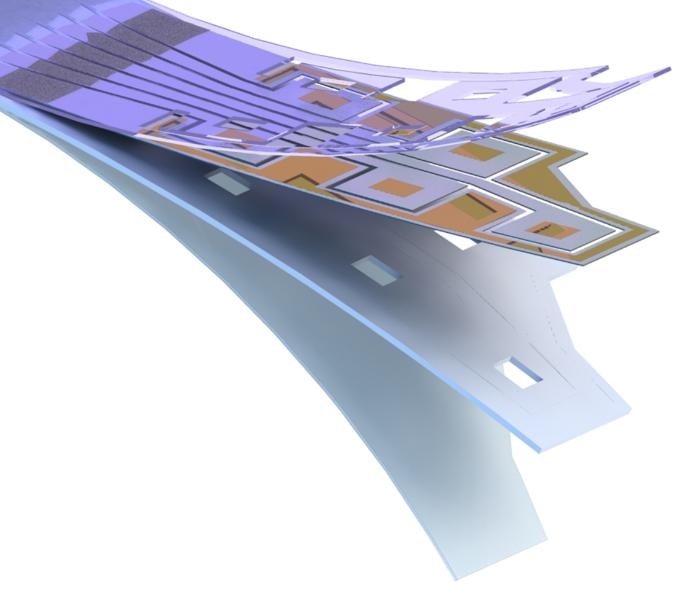Aug 16 2018
A flexible drug delivery device with controlled release for customized medicine has been developed by a KAIST research team, escalating the path toward theragnosis.
 Schematic view of flexible microdevice: The flexible drug delivery device for controlled release fabricated via inorganic laser lift off. (Image credit: KAIST)
Schematic view of flexible microdevice: The flexible drug delivery device for controlled release fabricated via inorganic laser lift off. (Image credit: KAIST)
Theragnosis, considered an upcoming medical technology, is getting more attention as a vital factor that will help enhance precision medicine for its featuring simultaneous diagnosis and therapeutics. Theragnosis devices including microneedle patches and smart contact lenses incorporate drug delivery devices and physiological data sensors.
In comparison to oral ingestion, this controlled drug delivery is known to boast uniform therapeutic results, fewer side-effects, and minimal dosages. A few research groups recently executed in-human applications of controlled-release large microchips for osteoporosis treatment. This, unfortunately, resulted in the groups failing to prove successful human-friendly flexible drug delivery systems ideal for controlled release.
For this microdevice, the team headed by Professor Daesoo Kim from the Department of Biological Science and Professor Keon Jae Lee from the Department of Materials Science and Engineering, invented a device on a rigid substrate and then transferred a 50 µm-thick active drug delivery layer to the flexible substrate through inorganic laser lift off.
This newly fabricated device displays mechanical flexibility while being able to maintain the ability to precisely administer accurate dosages at preferred times. The key technology aims at developing a freestanding gold capping layer right on top of the microreservoir with the drugs inside, which has been looked upon as impossible in traditional microfabrication.
It is now possible to apply the developed flexible drug delivery system to smart contact lenses or to treat brain disease by implanting them into corrugated and cramped organs. Additionally, when powered wirelessly, this flexible drug delivery system will be able to represent a unique platform for customized medicine. Through animal experimentation, the research team has already succeeded in proving that treatment for brain epilepsy showed progress by discharging anti-epileptic medication via the device.
Professor Lee is certain that the flexible microdevice is capable of further expanding the applications of therapeutic treatments for brain disease, smart contact lenses, and subcutaneous implantations for a day-to-day healthcare system. This study “Flexible Wireless Powered Drug Delivery System for Targeted Administration on Cerebral Cortex” has been discussed in the June issue of the online journal “Nano Energy”.